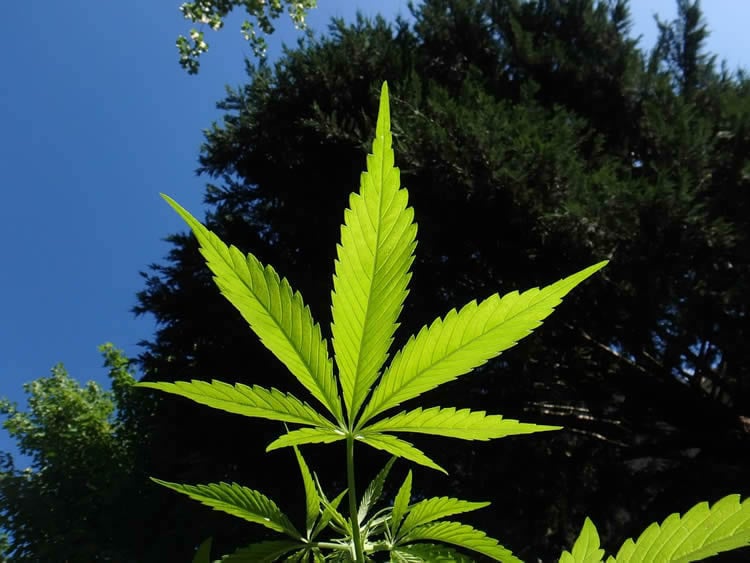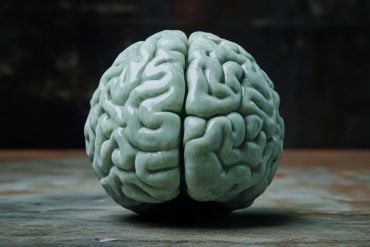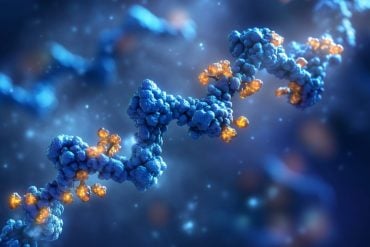Summary: Researchers report a new drug can help to reduce symptoms of cannabis withdrawal for those with cannabis use disorder.
Source: Yale University.
A new drug can help people diagnosed with cannabis use disorder reduce withdrawal symptoms and marijuana use, a new Yale-led study published Dec. 6 in the journal Lancet Psychiatry shows.
The double-blind, placebo-controlled study shows marijuana use declined among subjects who were administered the new drug — a fatty acid inhibitor that acts upon endocannabinoid metabolic receptors in the brain — compared to those receiving a placebo. Subjects who took the drug also reported fewer withdrawal symptoms and exhibited better sleep patterns, which are disrupted in cannabis-dependent individuals attempting to quit.
“With an increase of marijuana legalization efforts, it is reasonable to expect an increase in demand for treatment, and right now we don’t have any medications to help individuals trying to quit,” said Deepak Cyril D’Souza, professor of psychiatry at Yale and corresponding author of the study.
Cannabis use becomes a disorder when the person cannot stop using the drug even though it interferes with many aspects of his or her life. Cannabis use disorder (CUD) is marked by social and functional impairment, risky use, tolerance, and withdrawal symptoms, according to DSM-5, the statistical manual of mental health disorders developed by the American Psychiatric Association. Withdrawal symptoms are marked by craving for marijuana, irritability, anger, depression, insomnia, and decrease in appetite and weight. In 2015, about 4 million people in the United States met the diagnostic criteria for a cannabis use disorder, and almost 150,000 voluntarily sought treatment for their cannabis use.
According to recent national data, approximately one-third of all current cannabis users meet diagnostic criteria for CUD.
For the new study, D’Souza and colleagues recruited male daily cannabis users. Seventy subjects completed the trial, with 46 receiving the drug and the remainder receiving placebo. All subjects in the study underwent forced withdrawal on the inpatient research unit for the first week and continued receiving treatment for three weeks as outpatients after release from the hospital.
A reduction in cannabis use was confirmed by both self-report and urine drug testing.

Researchers have tried many different drugs in an attempt to reduce cannabis withdrawal symptoms and increase abstinence in those trying to quit, but none have been consistently successful or well tolerated, D’Souza said.
The new drug works by inhibiting fatty acid amide hydrolase (FAAH), the enzyme that degrades anandamide, a brain chemical that acts on brain cannabis receptors. Anandamide is an endocannabinoid present in the human body that is produced naturally by the brain.
“Anandamide is to cannabis as endorphins are to heroin,” D’Souza said.
A larger multicenter trial of the new drug funded by the U.S. National Institute of Drug Abuse is currently underway.
Funding: The research was funded by the National Institute of Drug Abuse.
Source: Bill Hathaway – Yale University
Publisher: Organized by NeuroscienceNews.com.
Image Source: NeuroscienceNews.com image is in the public domain.
Original Research: Abstract for “Efficacy and safety of a fatty acid amide hydrolase inhibitor (PF-04457845) in the treatment of cannabis withdrawal and dependence in men: a double-blind, placebo-controlled, parallel group, phase 2a single-site randomised controlled trial” by Deepak Cyril D’Souza, Jose Cortes-Briones, Gina Creatura, Grai Bluez, Halle Thurnauer, Emma Deaso, Kim Bielen, Toral Surti, Rajiv Radhakrishnan, Aarti Gupta, Swapnil Gupta, John Cahill, Mohamed A Sherif, Alexandros Makriyannis, Peter T Morgan, Mohini Ranganathan, Patrick D Skosnik in Lancet Psychiatry. Published December 6 2018.
doi:10.1016/S2215-0366(18)30427-9
[cbtabs][cbtab title=”MLA”]Yale University”Cannabis Withdrawal Eased For Dependent Users.” NeuroscienceNews. NeuroscienceNews, 7 December 2018.
<https://neurosciencenews.com/cannabis-withdrawal-pharmacology-10310/>.[/cbtab][cbtab title=”APA”]Yale University(2018, December 7). Cannabis Withdrawal Eased For Dependent Users. NeuroscienceNews. Retrieved December 7, 2018 from https://neurosciencenews.com/cannabis-withdrawal-pharmacology-10310/[/cbtab][cbtab title=”Chicago”]Yale University”Cannabis Withdrawal Eased For Dependent Users.” https://neurosciencenews.com/cannabis-withdrawal-pharmacology-10310/ (accessed December 7, 2018).[/cbtab][/cbtabs]
Abstract
Efficacy and safety of a fatty acid amide hydrolase inhibitor (PF-04457845) in the treatment of cannabis withdrawal and dependence in men: a double-blind, placebo-controlled, parallel group, phase 2a single-site randomised controlled trial
Background
Cannabis is one of the most widely used drugs worldwide. Cannabis use disorder is characterised by recurrent use of cannabis that causes significant clinical and functional impairment. There are no approved pharmacological treatments for cannabis use disorder. One approach is to potentiate endocannabinoid signalling by inhibiting fatty acid amide hydrolase (FAAH), the enzyme that degrades the endocannabinoid anandamide. We aimed to test the efficacy and safety of the FAAH-inhibitor PF-04457845 in reduction of cannabis withdrawal and cannabis use in men who were daily cannabis users.
Methods
We did a double-blind, placebo-controlled, parallel group phase 2a trial at one site in men aged 18–55 years with cannabis dependence according to DSM-IV criteria (equivalent to cannabis use disorder in DSM-5). After baseline assessments, participants were randomly assigned (2:1) to receive PF-04457845 (4 mg per day) or placebo using a fixed block size of six participants, stratified by severity of cannabis use and desire to quit. Participants were admitted to hospital for 5 days (maximum 8 days) to achieve abstinence and precipitate cannabis withdrawal, after which they were discharged to continue the remaining 3 weeks of treatment as outpatients. The primary endpoints were treatment-related differences in cannabis withdrawal symptoms during hospital admission, and week 4 (end of treatment) self-reported cannabis use and urine THC-COOH concentrations in the intention-to-treat population. The study is registered at ClinicalTrials.gov, number NCT01618656.
Findings
Between Sept 12, 2012, and Jan 18, 2016, 46 men were randomly assigned to PF-04457845 and 24 to placebo. Adherence to study medication was 88%, as confirmed by video-calling and pill count, and corroborated by corresponding drug and anandamide concentrations in blood. Relative to placebo, treatment with PF-04457845 was associated with reduced symptoms of cannabis withdrawal (first day of treatment mean symptom score 11·00 [95% CI 7·78–15·57] vs 6·04 [4·43–8·24]; difference 4·96 [0·71–9·21]; p adj=0·048; second day of treatment 11·74 [8·28–16·66] vs 6·02 [4·28–8·47]; difference 5·73 [1·13–10·32]; p adj=0·035) and related mood symptoms during the inpatient phase. Additionally, treatment with PF-04457845 was associated with lower self-reported cannabis use at 4 weeks (mean 1·27 joints per day [95% CI 0·82–1·97] vs 0·40 [0·25–0·62]; difference 0·88 [0·29–1·46]; p=0·0003) and lower urinary THC-COOH concentrations (mean 657·92 ng/mL [95% CI 381·60–1134·30] vs 265·55 [175·60–401·57]; difference 392·37 [17·55–767·18)]; p=0·009). Eight (17%) patients in the PF-04457845 group and four (17%) in the placebo group discontinued during the treatment period. During the 4-week treatment phase, 20 (43%) of 46 participants in the PF-04457845 group and 11 (46%) of 24 participants in the placebo group had an adverse event. There were no serious adverse events.
Interpretation
PF-04457845, a novel FAAH inhibitor, reduced cannabis withdrawal symptoms and cannabis use in men, and might represent an effective and safe approach for the treatment of cannabis use disorder.
Funding
United States National Institute of Drug Abuse (NIDA).






